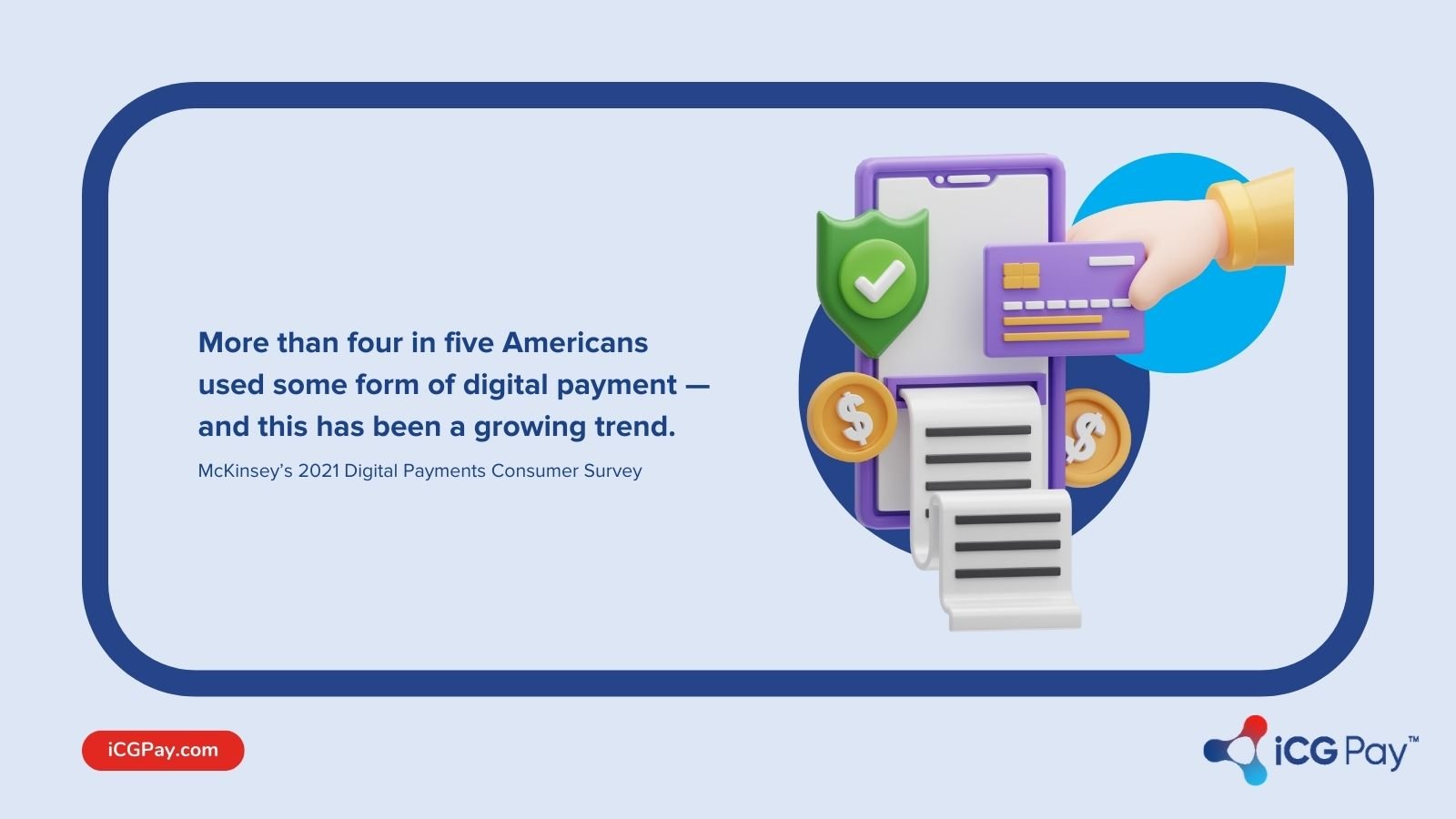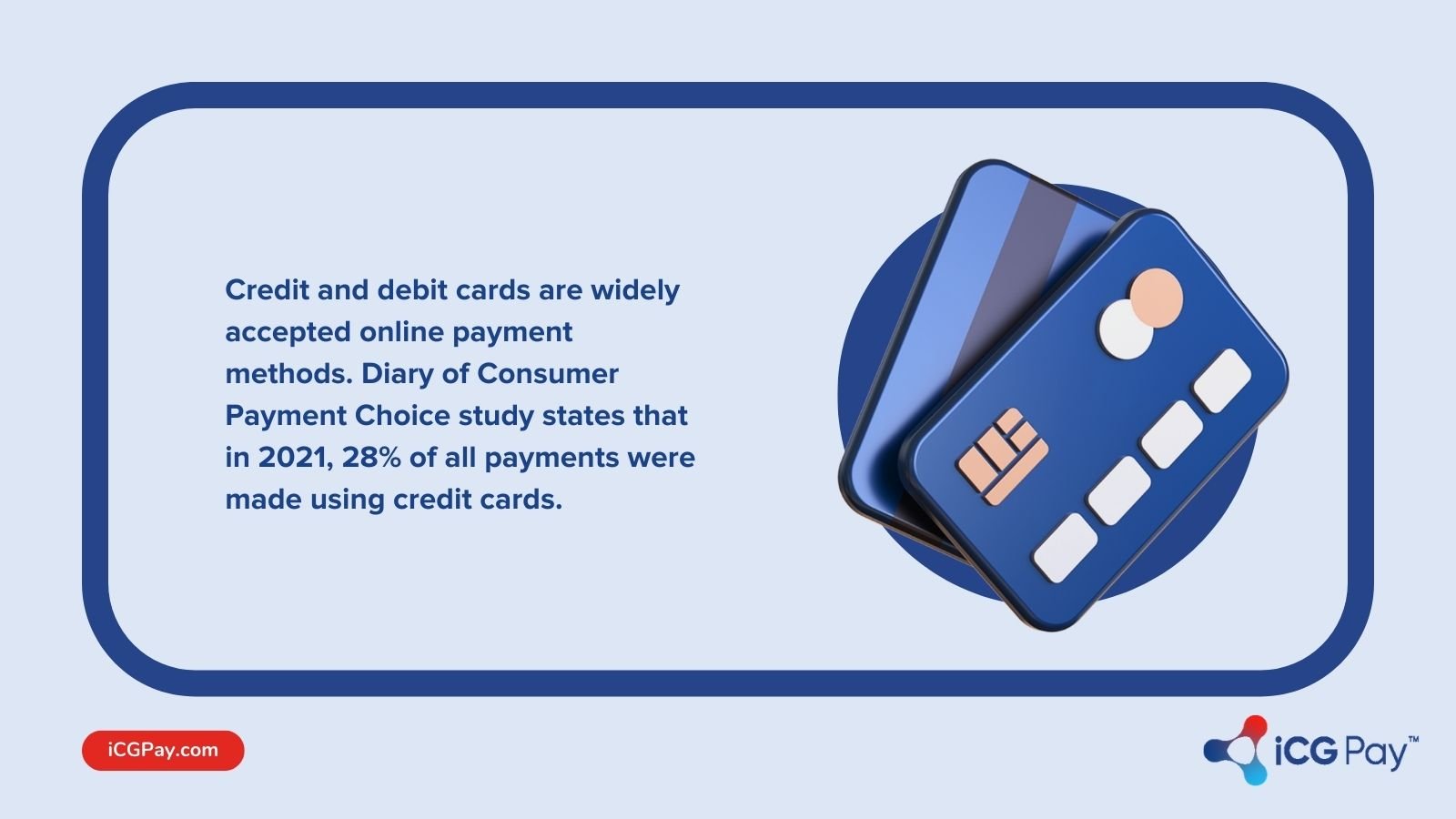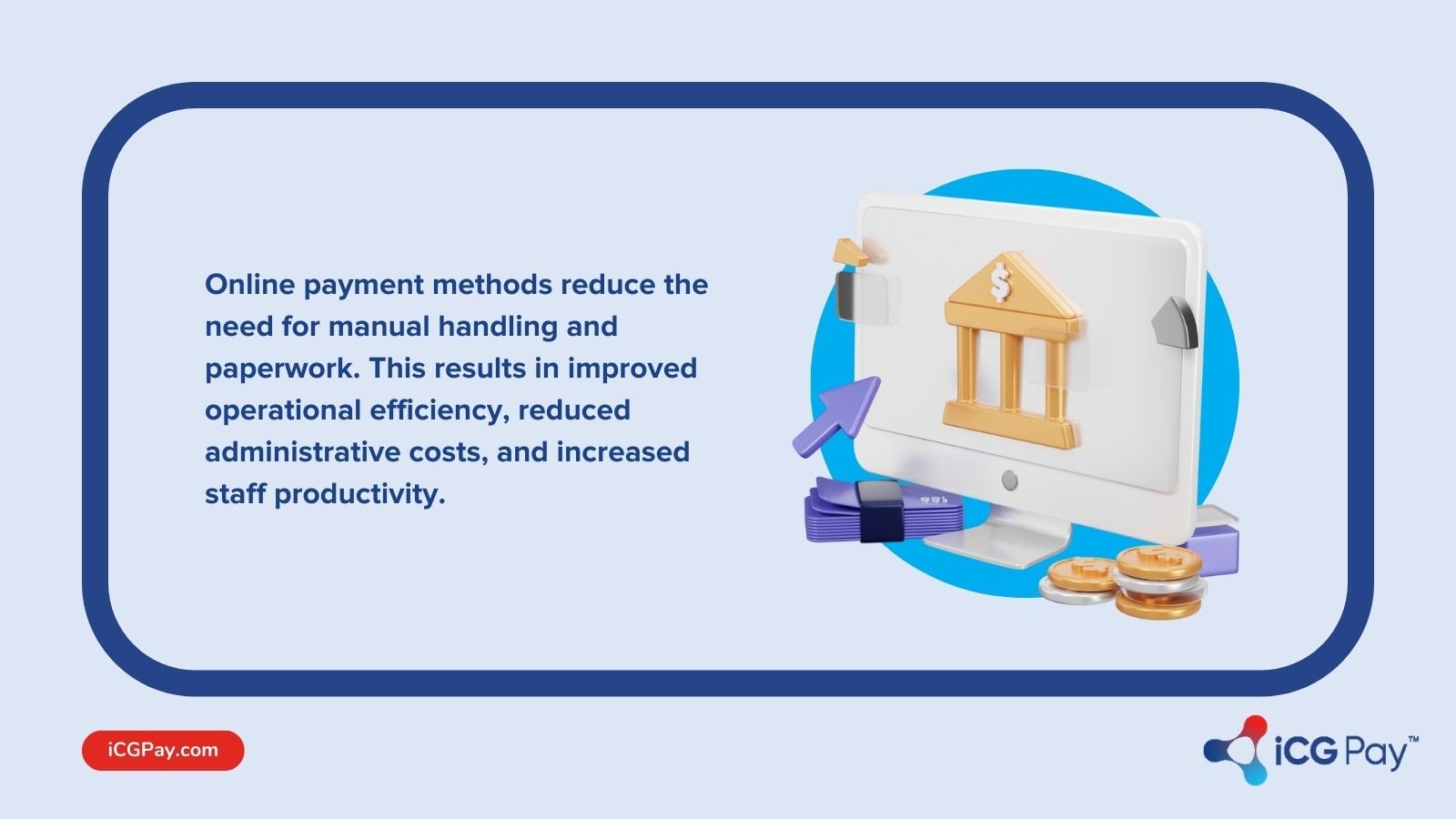Commerce has no borders, and customers and revenue can come from anywhere.
According to McKinsey’s 2021 Digital Payments Consumer Survey, in 2021, more than four in five Americans used some form of digital payment — and this has been a growing trend.
So, offering diverse online payment methods is necessary for small banks and credit unions. This is to cater to their customers’ changing preferences and stay competitive in the digital era.
In this article, we’re going to answer questions like:
- What are the latest online payment methods available for small banks?
- How can credit unions adapt their online payment methods to meet evolving needs?
- What are the recommended online payment solutions for small financial institutions?
- How can small banks meet customers’ changing needs with online payment methods?
- What strategies should small banks and credit unions implement to keep up with evolving online payment trends?

The Rise of Online Payment Methods
The COVID-19 pandemic accelerated the rise of online payment methods and the shift towards digital transactions.
In the latest PwC Payments 2025 & Beyond report, 89% of the interviewed respondents said the shift towards eCommerce would continue to rise.
Also, banks said that 90% of their most helpful customer data comes from online payments.
From these numbers, it’s evident that the momentum behind these trends will continue to shape the future of financial transactions and reshape how we engage with commerce.
So, how can your credit union adapt its online payment methods to meet these evolving needs?
- Partner with a Payment Processor: Payment processors offer specialized expertise, infrastructure, and security measures to handle payment transactions efficiently. Your credit union can benefit from its technology and industry knowledge by setting up a strategic partnership with a reliable payment processor.
- Utilize Robotic Process Automation (RPA): RPA technology involves using software robots or “bots” to automate repetitive and rule-based tasks, reducing manual errors and saving valuable time for your staff. By incorporating RPA, you can automate tasks such as data entry, transaction reconciliation, and report generation. This streamlines the payment process, improves operational efficiency, and minimizes the risk of human error.
- Implement Big Data Visualization: Big data visualization transforms raw data into visually appealing charts, graphs, and interactive dashboards. These visual representations make it easier for decision-makers within your credit union to identify patterns, detect anomalies, and make data-driven decisions related to online payment methods.
Understanding Online Payment Methods
“Online payment methods are ways to pay online using an account, a card, an eWallet, a bank transfer, or a cryptocurrency.”
Luckily, with the rise in digital payments, there’s a range of online payment methods at your disposal to meet the diverse needs of your customers.
Offering a variety lets you accommodate diverse needs and enhances customer satisfaction. Here are some of the more popular payment methods:
Credit/Debit Cards
Credit and debit cards are widely accepted online payment methods. Diary of Consumer Payment Choice study states that in 2021, 28% of all payments were made using credit cards.
Digital Wallets
Examples of digital wallets include Apple Pay, Google Pay, and PayPal. These wallets are linked to credit/debit cards or bank accounts. However, you can also link store gift cards, membership and loyalty cards, coupons, event tickets, plane tickets, and more.
ACH Transfers
ACH (Automated Clearing House) transfers enable the electronic funds transfer between bank accounts. ACH transfers are widely used for direct deposits, bill payments, and business-to-business transactions.

Alternative Payment Solutions
Alternative payment solutions encompass emerging methods like cryptocurrency, prepaid cards, and mobile payment apps like Venmo or Alipay.
These methods cater to specific customer segments seeking unique payment options.
Remember, the suitability of each payment method for different customer segments also varies.
For example, credit and debit cards are good for customers who want to earn rewards or who need to make large purchases. Digital wallets favor customers who wish for convenience and security. Bank transfers are the best for low-cost payments.
Benefits of Offering Online Payment Methods
Convenience and Accessibility
Customers can pay anytime, anywhere, with an internet connection. This accessibility allows customers to manage their finances conveniently, improving their banking experience.
Faster Payments and Improved Cash Flow
Funds are transferred almost instantaneously, resulting in quicker payment confirmations and improved customer cash flow management. It’s also easy to set up automatic payments.
Improved Customer Satisfaction
Offering online payment methods aligns with the changing expectations of customers who seek digital solutions for their banking needs.
Providing convenient and secure payment options enhances customer satisfaction and fosters loyalty toward the financial institution.
Improved Efficiency and Cost Savings
Online payment methods reduce the need for manual handling and paperwork. This results in improved operational efficiency, reduced administrative costs, and increased staff productivity. Automating payment processes also minimizes errors and reduces the need for manual intervention.

Choosing the Right Online Payment Methods
To settle on the best method, ask yourself these questions:
Customer Base
- What are the payment preferences of your customers?
- Do they prefer to use credit cards, debit cards, digital wallets, or bank transfers?
Budget
- How much are you willing to spend on payment processing fees?
Integration Options
- How easy is it to integrate the payment method with your existing systems?
- Do you have the resources to integrate the payment method, or do you need to hire a third-party vendor?
Security
- How secure is each payment method?
- What measures are in place to protect customer data?
Features and Functionality
- What features and functionality are essential to your customers?
Integrating Online Payment Methods
A system that inconveniences customers becomes even worse when not offering online payment methods.
The integration process involves:
- Selecting the right payment gateway.
- Setting up the necessary infrastructure.
- Configuring the system to accept payments from various sources.
To ensure success, the system must have these three essentials:
- Seamless integration
- User-friendly interfaces
- Intuitive payment flows
So, how do you ensure the online payment method you choose satisfies your customers?
Test the payment process thoroughly
Before you launch the online payment method:
- Test it.
- Simulate various scenarios to identify and address any potential issues or glitches.
- Ensure the payment process functions smoothly and seamlessly across different devices and browsers.
Get feedback from customers
Collect the customers’ input on the user experience, ease of use, and any challenges encountered. This feedback will help you identify areas for improvement and make necessary adjustments.
Provide customer support
Offer robust customer support channels to assist customers with any inquiries or difficulties during the payment process. Promptly respond to customer inquiries and provide guidance.
Case Studies: Successful Implementation of Online Payment Methods
Alliant Credit Union
Alliant Credit Union offers online banking services, including online bill pay, mobile check deposit, and person-to-person payments.
This credit union mobile app has received high ratings for its user-friendly interface and convenient features. NerdWallet rates it top for the best mobile banking at a credit union.
One satisfied user commented, “The app is so powerful I almost never need to call the super helpful, always available customer service! The only time I needed to call this year was to make a change to the terms of my CD during the final month of its term. Good app. Great service.”
Future Trends in Online Payments
With technology, you must keep up with it or risk offering outdated payment methods.
To put this in perspective, according to Moore’s Law, the processing capacity of technology doubles approximately every 18 months. This rapid pace of technological advancement means that what may be cutting-edge today could become obsolete in a relatively short period. This applies to online payment methods as well.
Let’s look at some key areas that are driving the future of online payments:
Contactless Transactions
Contactless payments gained momentum, particularly in response to the COVID-19 pandemic.
Contactless payments are facilitated through NFC technology or QR codes. This trend will continue as customers increasingly seek touchless payment options for safety and convenience.
Blockchain Technology
Blockchain’s decentralized and secure nature eliminates the need for intermediaries. This enables faster and more transparent transactions.
Blockchain technology has the potential to streamline cross-border payments, reduce costs, enhance security, and increase trust among participants in the payment ecosystem. As blockchain matures and gains wider adoption, it will likely reshape the future of online payments.
Internet of Things (IoT) Payments
The Internet of Things (IoT) connects many devices to the internet.
IoT-enabled devices, such as smart home appliances, wearables, and connected cars, can initiate recurring payments autonomously based on predetermined triggers or user preferences.
This enables frictionless payments in various contexts, such as smart retail, transportation, and healthcare. IoT payments are expected to become more prevalent as connected devices grow.
Conclusion
The present and future of online payments are filled with exciting possibilities. As we saw from the numbers, more customers are demanding their financial institution offer online payment methods.
However, setting up infrastructure from scratch and integrating online payment methods is complex and challenging for small banks and credit unions.
The solution? Partner with a payment processor.
By collaborating with a trusted payment processor, you leverage their expertise, infrastructure, and resources to streamline the integration of online payment methods.
For example, at iCG Pay, formerly known as iCheckGateway.com, we provide comprehensive payment solutions for small banks and credit unions. Our platform offers seamless integration, user-friendly interfaces, payment portals, and intuitive payment flows.
Partner with us today to offer innovative payment solutions to your customers.

.jpg)


